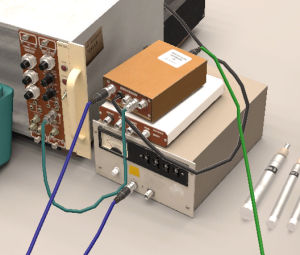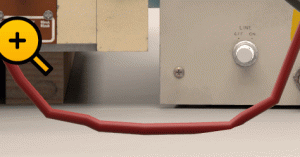I am using Obi-Rope for an educational WebGL app that needs to run on low-spec devices, so I am limited to using ropes with few particles and few constraint iterations.
The ropes are used for user-managed cables purely for visuals. I need a solution that can wrap around 3D objects, and Obi seems like the best choice for this.

Because I can't use many particles, I need to use surface-based collisions or else ropes will clip through and catch on objects. However, the ropes can also rest on a flat table surface, and they jitter on the table because particles can only create a single contact.
click on gif to see jittering

I have tried to use sleeping, but a sleeping threshold aggressive enough to stop the jitter also freezes particles that should clearly stay in motion. I also tried surface collision tolerance, but a value high enough to stop the jitter allows particles to clip through objects too much as if I were not using surface based collisions at all.
Is there any other technique I can use to mitigate jitter while preventing clipping without increasing the number of particles and constraint iterations? Thanks!
The ropes are used for user-managed cables purely for visuals. I need a solution that can wrap around 3D objects, and Obi seems like the best choice for this.
Because I can't use many particles, I need to use surface-based collisions or else ropes will clip through and catch on objects. However, the ropes can also rest on a flat table surface, and they jitter on the table because particles can only create a single contact.
click on gif to see jittering
I have tried to use sleeping, but a sleeping threshold aggressive enough to stop the jitter also freezes particles that should clearly stay in motion. I also tried surface collision tolerance, but a value high enough to stop the jitter allows particles to clip through objects too much as if I were not using surface based collisions at all.
Is there any other technique I can use to mitigate jitter while preventing clipping without increasing the number of particles and constraint iterations? Thanks!




